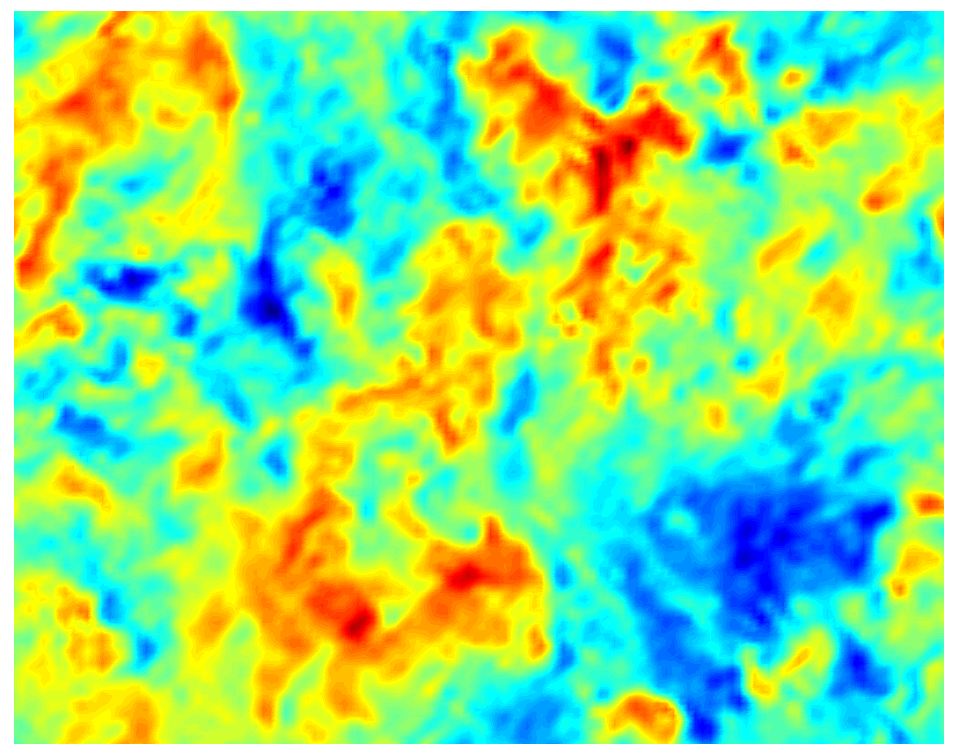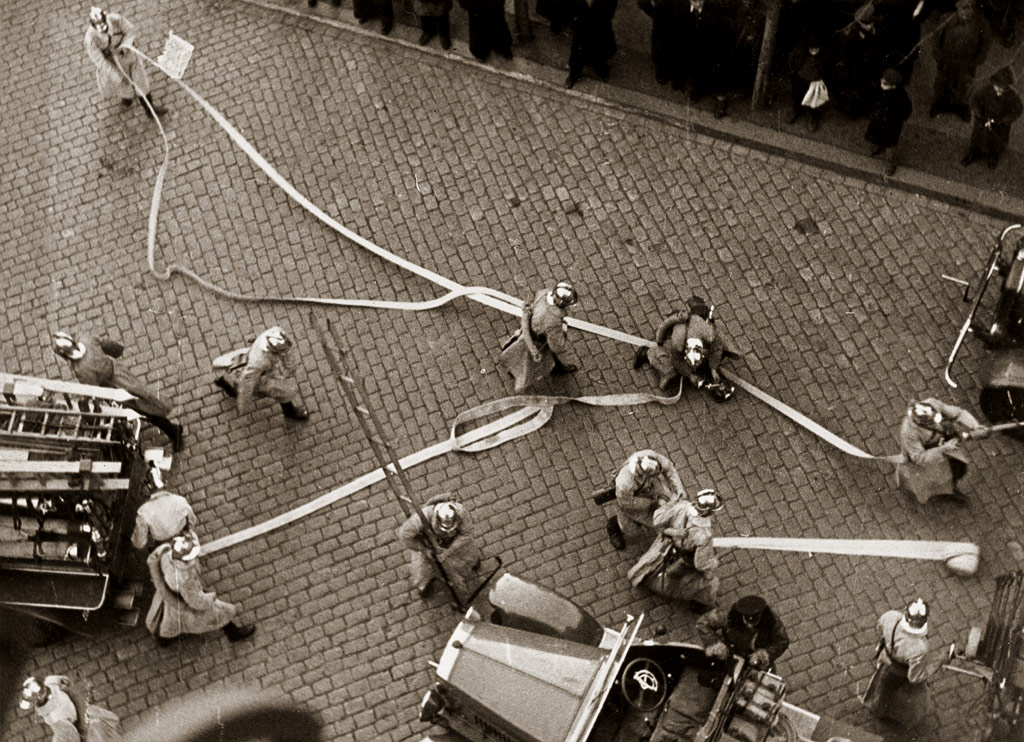|
Fire Dynamics Simulator
Fire Dynamics Simulator (FDS) is a computational fluid dynamics (CFD) model of fire-driven fluid flow. The computer program solves numerically a large eddy simulation form of the Navier–Stokes equations appropriate for low-speed, thermally-driven flow, with an emphasis on smoke and heat transport from fires, to describe the evolution of fire. FDS is free software developed by the National Institute of Standards and Technology (NIST) of the United States Department of Commerce, in cooperation with VTT Technical Research Centre of Finland. Smokeview is the companion visualization program that can be used to display the output of FDS. The first version of FDS was publicly released in February 2000. To date, about half of the applications of the model have been for design of smoke handling systems and sprinkler/detector activation studies. The other half consist of residential and industrial fire reconstructions. Throughout its development, FDS has been aimed at solving practical ... [...More Info...] [...Related Items...] OR: [Wikipedia] [Google] [Baidu] |
Computational Fluid Dynamics
Computational fluid dynamics (CFD) is a branch of fluid mechanics that uses numerical analysis and data structures to analyze and solve problems that involve fluid dynamics, fluid flows. Computers are used to perform the calculations required to simulate the free-stream flow of the fluid, and the interaction of the fluid (liquids and gases) with surfaces defined by Boundary value problem#Boundary value conditions, boundary conditions. With high-speed supercomputers, better solutions can be achieved, and are often required to solve the largest and most complex problems. Ongoing research yields software that improves the accuracy and speed of complex simulation scenarios such as transonic or turbulence, turbulent flows. Initial validation of such software is typically performed using experimental apparatus such as wind tunnels. In addition, previously performed Closed-form solution, analytical or Empirical research, empirical analysis of a particular problem can be used for compa ... [...More Info...] [...Related Items...] OR: [Wikipedia] [Google] [Baidu] |
Large Eddy Simulation
Large eddy simulation (LES) is a mathematical model for turbulence used in computational fluid dynamics. It was initially proposed in 1963 by Joseph Smagorinsky to simulate atmospheric air currents, and first explored by Deardorff (1970). LES is currently applied in a wide variety of engineering applications, including combustion, acoustics, and simulations of the atmospheric boundary layer. The simulation of turbulent flows by numerically solving the Navier–Stokes equations requires resolving a very wide range of time and length scales, all of which affect the flow field. Such a resolution can be achieved with direct numerical simulation (DNS), but DNS is computationally expensive, and its cost prohibits simulation of practical engineering systems with complex geometry or flow configurations, such as turbulent jets, pumps, vehicles, and landing gear. The principal idea behind LES is to reduce the computational cost by ignoring the smallest length scales, which are the most c ... [...More Info...] [...Related Items...] OR: [Wikipedia] [Google] [Baidu] |
Navier–Stokes Equations
The Navier–Stokes equations ( ) are partial differential equations which describe the motion of viscous fluid substances. They were named after French engineer and physicist Claude-Louis Navier and the Irish physicist and mathematician George Gabriel Stokes. They were developed over several decades of progressively building the theories, from 1822 (Navier) to 1842–1850 (Stokes). The Navier–Stokes equations mathematically express momentum balance for Newtonian fluids and make use of conservation of mass. They are sometimes accompanied by an equation of state relating pressure, temperature and density. They arise from applying Isaac Newton's second law to fluid motion, together with the assumption that the stress in the fluid is the sum of a diffusing viscous term (proportional to the gradient of velocity) and a pressure term—hence describing ''viscous flow''. The difference between them and the closely related Euler equations is that Navier–Stokes equat ... [...More Info...] [...Related Items...] OR: [Wikipedia] [Google] [Baidu] |
Appropriate Technology
Appropriate technology is a movement (and its manifestations) encompassing technology, technological choice and application that is small-scale, affordable by its users, labor-intensive, efficient energy use, energy-efficient, environmentally sustainable, and localism (politics), locally autonomous. It was originally articulated as intermediate technology by the economist E. F. Schumacher, Ernst Friedrich "Fritz" Schumacher in his work ''Small Is Beautiful.'' Both Schumacher and many modern-day proponents of appropriate technology also emphasize the technology as People-centered development, people-centered. Appropriate technology has been used to address issues in a wide range of fields. Well-known examples of appropriate technology applications include: bike- and hand-powered water pumps (and other self-powered equipment), the bicycle, the universal nut sheller, self-contained solar lamps and Solar street light, streetlights, and passive solar building designs. Today appropriate ... [...More Info...] [...Related Items...] OR: [Wikipedia] [Google] [Baidu] |
National Institute Of Standards And Technology
The National Institute of Standards and Technology (NIST) is an agency of the United States Department of Commerce whose mission is to promote American innovation and industrial competitiveness. NIST's activities are organized into Outline of physical science, physical science laboratory programs that include Nanotechnology, nanoscale science and technology, engineering, information technology, neutron research, material measurement, and physical measurement. From 1901 to 1988, the agency was named the National Bureau of Standards. History Background The Articles of Confederation, ratified by the colonies in 1781, provided: The United States in Congress assembled shall also have the sole and exclusive right and power of regulating the alloy and value of coin struck by their own authority, or by that of the respective states—fixing the standards of weights and measures throughout the United States. Article 1, section 8, of the Constitution of the United States, ratified i ... [...More Info...] [...Related Items...] OR: [Wikipedia] [Google] [Baidu] |
United States Department Of Commerce
The United States Department of Commerce (DOC) is an executive department of the U.S. federal government. It is responsible for gathering data for business and governmental decision making, establishing industrial standards, catalyzing economic development, promoting foreign direct investment, and safeguarding national economic security. The Department of Commerce is one of four federal agencies authorized to appoint personnel in the United States Foreign Service, and its NOAA Corps — formerly the Coast and Geodetic Survey Corps — is one of the eight branches of the uniformed services of the United States. During a large-scale disaster or catastrophe, it assumes the coordinating responsibilities for the economic recovery support function under the national disaster recovery framework. Since 2023, it has led U.S. government activities related to safe artificial intelligence development and, from 1913 to 1939, it managed the National Aquarium. The department is head ... [...More Info...] [...Related Items...] OR: [Wikipedia] [Google] [Baidu] |
Wildland–urban Interface
The wildland–urban interface (WUI) is a zone of transition between wilderness (unoccupied land) and land development, land developed by human impact on the environment, human activity – an area where a built environment meets or intermingles with a natural environment. Human settlements in the WUI are at a greater risk of catastrophic wildfire. Definitions In the United States, the wildland–urban interface (WUI) has two definitions. The US Forest Service defines the wildland–urban interface qualitatively as a place where "humans and their development meet or intermix with wildland fuel." Communities that are within of the zone are included. A quantitative definition is provided by the Federal Register, which defines WUI areas as those containing at least one housing unit per . The Federal Register definition splits the WUI into two categories based on vegetation density: * Intermix WUI, or lands that contain at least one housing unit per in which vegetation occupies ... [...More Info...] [...Related Items...] OR: [Wikipedia] [Google] [Baidu] |
US Forest Service
The United States Forest Service (USFS) is an agency within the U.S. Department of Agriculture. It administers the nation's 154 national forests and 20 national grasslands covering of land. The major divisions of the agency are the Chief's Office, National Forest System, State and Private Forestry, Business Operations, as well as Research and Development. The agency manages about 25% of federal lands and is the sole major national land management agency not part of the U.S. Department of the Interior (which manages the National Park Service, the U.S. Fish and Wildlife Service and the Bureau of Land Management). History In 1876, Congress formed the office of Special Agent in the Department of Agriculture to assess the quality and conditions of forests in the United States. Franklin B. Hough was appointed the head of the office. In 1881, the office was expanded into the newly formed Division of Forestry. The Forest Reserve Act of 1891 authorized withdrawing land fro ... [...More Info...] [...Related Items...] OR: [Wikipedia] [Google] [Baidu] |
Wildfire Modeling
Wildfire modeling is concerned with numerical simulation of wildfires to comprehend and predict fire behavior. Wildfire modeling aims to aid wildfire suppression, increase the safety of firefighters and the public, and minimize damage. Wildfire modeling can also aid in protecting ecosystems, watersheds, and air quality. Using computational science, wildfire modeling involves the statistical analysis of past fire events to predict spotting risks and front behavior. Various wildfire propagation models have been proposed in the past, including simple ellipses and egg- and fan-shaped models. Early attempts to determine wildfire behavior assumed terrain and vegetation uniformity. However, the exact behavior of a wildfire's front is dependent on a variety of factors, including wind speed and slope steepness. Modern growth models utilize a combination of past ellipsoidal descriptions and Huygens' Principle to simulate fire growth as a continuously expanding polygon. Extreme value theor ... [...More Info...] [...Related Items...] OR: [Wikipedia] [Google] [Baidu] |
Firefighting
Firefighting is a profession aimed at controlling and extinguishing fire. A person who engages in firefighting is known as a firefighter or fireman. Firefighters typically undergo a high degree of technical training. This involves structural firefighting and wildland firefighting. Specialized training includes aircraft firefighting, shipboard firefighting, aerial firefighting, maritime firefighting, and proximity firefighting. Firefighting is a dangerous profession due to the toxic environment created by combustible materials, with major risks being smoke, oxygen deficiency, elevated temperatures, poisonous atmospheres, and violent air flows. To combat some of these risks, firefighters carry self-contained breathing apparatus. Additional hazards include falling (accident), falls – a constant peril while navigating unfamiliar layouts or confined spaces amid shifting debris under limited visibility – and structural collapse that can exacerbate the problems encountered in a toxi ... [...More Info...] [...Related Items...] OR: [Wikipedia] [Google] [Baidu] |
Fire Prevention
Fire prevention is a function of many fire departments. The goal of fire prevention is to educate the public on the precautions that should be taken to prevent potentially harmful fires from occurring. It is a proactive method of preventing fire-based emergencies and reducing the damage caused by them. Fire prevention education can take the form of videos, pamphlets, and banners. Often, the messages and lessons are simple tips. Many fire departments will have one or more Fire Prevention Officers, which may also be a routine duty of firefighters. Safe practices Smoke detector installation The National Fire Protection Association identifies that 3 out of 5 deaths that occur during fires happen in homes that do not have smoke detectors installed or homes that do not have working smoke detectors. Research shows that the chances of dying in a fire are cut in half when smoke detectors are present. It is recognized that 74 percent of homes do have working smoke detectors installe ... [...More Info...] [...Related Items...] OR: [Wikipedia] [Google] [Baidu] |






